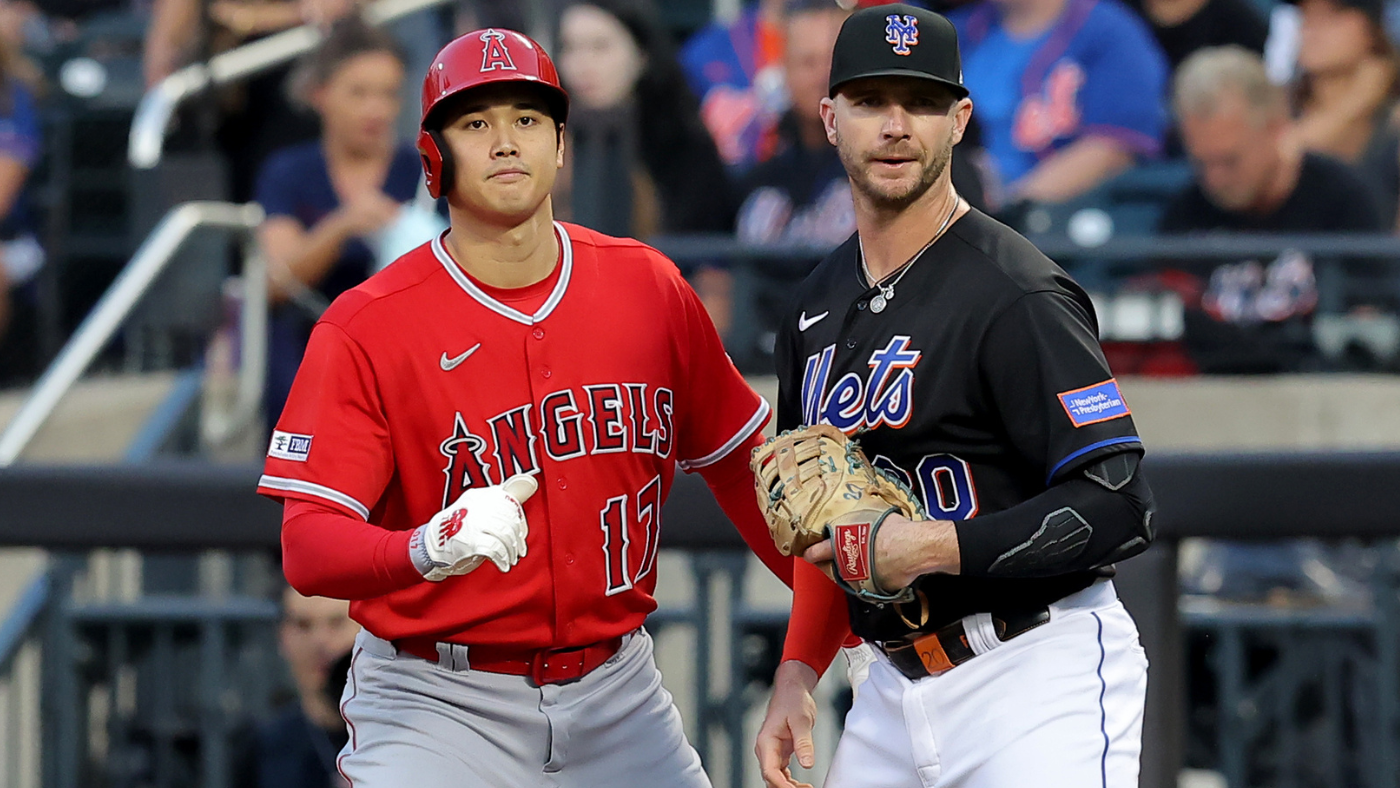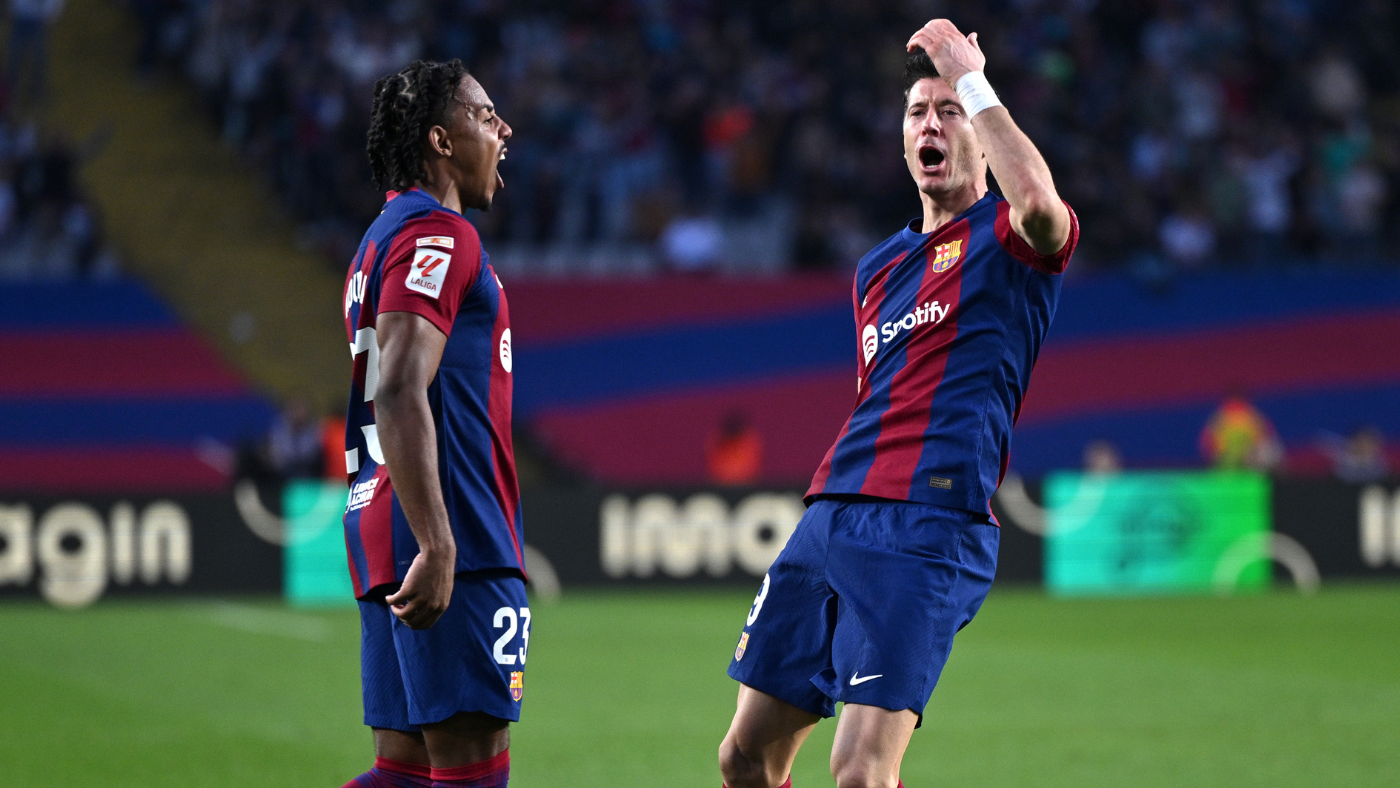Four moves Mets should make this offseason: Go big for Shohei Ohtani, make call on Pete Alonso’s future
Written by CBS SPORTS ALL RIGHTS RESERVED on November 28, 2023


At 75-87, the New York Mets were arguably the most disappointing team in baseball this past season. They entered 2023 with a record $330.7 million payroll, and their end-of-season competitive balance tax payroll sat around $375 million. That will come with a CBT bill in the $100 million range, so, all-in, owner Steve Cohen is looking at a $475 million or so outlay in 2023.
That is money poorly spent in the context of the team’s record, though the Mets have a plan in place. They are using Cohen’s wealth to try to contend in the short-term while building up the farm system for the future, and when things went sideways this year, they pivoted and sold at the trade deadline. To do so, they ate a bunch of money to get better prospects in return for Max Scherzer, Justin Verlander, and others. It’s just money. Cohen has plenty of it and the Mets leveraged it into premium young talent.
It’s unclear whether Cohen is willing to run a similarly astronomical payroll next season. He finally got his white whale in September, when he hired David Stearns away from the Milwaukee Brewers to run his baseball operations. Stearns brings small-market savvy and resourcefulness to a big-market operation. I’m certain Cohen hopes Stearns can keep payroll below 2023 levels, if not in 2024 then definitely long-term.
Going from 75-87 in 2023 to the postseason in 2024 is not unreasonable. The Texas Rangers went from 68-94 in 2022 to World Series champs in 2023. There are three wild-card berths per league now, and the Mets can afford to reinforce the roster. Selling at the trade deadline this summer does not mean the Mets are rebuilding. Hardly. They’ll be in it to win it in 2024.
With that in mind, here are four things the Mets can do — nay, should do — to vault themselves back into the postseason race next year.
1. Go big for Ohtani
What are the Mets’ two biggest needs? They need a middle of the order left-handed power hitter, and they need long-term rotation help. Shohei Ohtani provides both those things. He led the American League in home runs in 2023 and can be a difference-making bat in 2024. Then, once he completes elbow surgery rehab, Ohtani can join the rotation in 2025. See? Nice and easy.
Of course, it’s not quite that easy. The recent elbow surgery is Ohtani’s second major elbow procedure in six years and we don’t know how effective he’ll be when he does return to the mound. (General rule of thumb: Don’t doubt Ohtani.) There is a lot of risk involved here, but is any team better equipped to take on risk than the Mets? Getting “only” a hitter when you’re paying Ohtani big to hit and pitch is an expense Cohen can absorb and not sweat even a tiny little bit.
There is an off-the-field component to consider here as well. Assuming he leaves the Los Angeles Angels, Ohtani will open all sorts of new revenue streams for his next team. Japanese sponsors, Japanese fans, the works. The Mets already have a very successful Japanese player in Kodai Senga, but with all due respect, Senga’s Q rating doesn’t come close to Ohtani’s. Ohtani is an investment as much as a baseball player.
Ohtani is the game’s biggest star and greatest individual talent, and as far as I’m concerned, New York teams should always be in the mix for players like that. That he aligns so perfectly with what the Mets need short and long-term makes this an even more obvious fit. Convincing Ohtani the Mets are ready to contend won’t be easy, but a) that’s what the money is for, and b) that’s why the Mets can’t stop at Ohtani this offseason.
(Juan Soto, the obvious alternative to Ohtani as a middle-of-the-order lefty bat, makes sense for the Mets as well. The issue there is the Mets lack young pitching to send the pitching-needy San Diego Padres. Other teams, including the one a few miles away in the Bronx, match up much better with the Padres for a Soto trade.)
2. Go big for Yamamoto too
Ohtani and Yoshinobu Yamamoto needn’t be an either/or situation. Cohen can afford both, and remember, the Mets have over $45 million coming off the books after next season once Scherzer’s and Verlander’s contracts expire. Ohtani and Yamamoto would push the Mets over $300 million again next year, but if Cohen doesn’t sweat running a payroll that high, I suggest you shouldn’t either.
Yamamoto is one of those free agents who comes along maybe once a decade. The erstwhile Orix Buffaloes ace is only 25 and he has the ability to pitch at or near the front of a big-league rotation. The Mets badly need long-term rotation help — it is their No. 1 priority this offseason — and Yamamoto is a prime-aged pitcher who costs nothing but money, the team’s greatest resource.
The Mets are trying to win now while building toward the future and Yamamoto fits both timelines. He can help them win in 2024 and also be an integral part of the club once the farm system begins pumping more talent into the MLB roster. There is no draft pick compensation attached to Yamamoto. It’s a straight cash transaction for a 25-year-old possible star. The Mets must be aggressive.
3. Add to the rotation
As things stand, New York’s rotation is Senga and José Quintana, and then three question marks. Tylor Megill, Joey Lucchesi, and José Butto are currently penciled in as the No. 3, 4, and 5 starters when they really should be more like No. 5, 6, and 7. Signing Yamamoto would help the rotation immensely, though the Mets need even more rotation help beyond him.
Kyle Gibson, Lance Lynn, and Aaron Nola (and probably Sonny Gray) have already signed this offseason and Gibson stands out as the kind of one-year veteran innings guy the Mets could have used at the back of their rotation. There’s nothing sexy about him (sorry, Kyle), but as far as No. 4-5 starters go, a contending team could do a whole lot worse than Gibson.
Here are the top remaining free agent starters by projected 2024 WAR:
- Yoshinobu Yamamoto: 3.7 WAR (projected)
- Blake Snell: 3.2 WAR
- Jordan Montgomery: 3.2 WAR
- Eduardo Rodriguez: 2.8 WAR
The Mets could really use one of those top four guys. Ideally it would be Yamamoto give his youth. Snell just won the NL Cy Young and Montgomery is New York and World Series battle-tested. You can make a convincing argument for any of these guys.
The Mets reportedly have interest in Luis Severino, a reclamation projection who is familiar with New York. Other second- and third-tier free agent starters like Nick Martinez, Wade Miley, and Michael Wacha could work as well. Would the Mets be open to a reunion with Seth Lugo and/or Marcus Stroman? What about seeing whether Erick Fedde could be their Merrill Kelly?
Point is, the Mets need multiple starters this offseason. They don’t all have to be top of the rotation types (though you can never have too many of those), but they need multiple starters. Something like, say, Yamamoto and Wacha would really solidify the rotation. Or Montgomery’s reliability and Severino’s upside. There is no shortage of viable combinations.
4. Make a decision on Alonso
Pete Alonso, the Mets franchise player, is now one year away from free agency. Trade rumblings persist and that’s just the way it’s going to be until he’s either traded or signs a long-term extension. Alonso slugged 45 homers in 2023, and while his .217 batting average is an eyesore, the underlying indicators (exit velocity, etc.) are very strong. He remains a premier power threat.
The Mets have three options with Alonso, realistically, and I’m going to rank them in order of what I think the Mets should do:
- Sign Alonso to a long-term contract extension.
- Trade him for a (relatively) big package this offseason.
- Keep him and then trade him at the deadline if things go sideways next year.
Generally speaking, it’s easier to trade players in the offseason than at the deadline because potential trade partners haven’t used up their entire budget yet, or fallen out of the postseason race. I’m not sure that’ll apply with Alonso. There are always contenders looking for bats at the deadline, and the Mets have shown a willingness to eat money to facilitate trades.
It feels like the Mets have to make a decision about Alonso this offseason. Either trade him or sign him to an extension. Taking him into next season as a lame duck is the worst option. The Mets would be risking a smaller trade market, and the closer Alonso gets to free agency, the more likely he is to explore the open market. Now is the best time to trade him for max value or lock him up.
Francisco Lindor is the Mets’ best player but Alonso is the face of the franchise as the homegrown tater-mashing machine who so clearly loves being a Met. I’m sure a long-term contract — eight years and $200 million? — will be a “bad” deal in terms of production vs. cost, but Alonso’s value to the Mets transcends what he does on the field. And $1 to Cohen and the Mets is not the same as $1 to most other teams. The Mets operate in a different world, financially.
I think the Mets should sign Alonso to a Met-for-life contract and let him obliterate the franchise’s home run record (he’s 60 behind Darryl Strawberry’s 252), go down as one of the greatest players in team history, and hopefully be a central figure in the club’s next World Series championship. If the Mets feel differently, fine, but trade him now rather than wait until the deadline. This is the time to get maximum value.
The post Four moves Mets should make this offseason: Go big for Shohei Ohtani, make call on Pete Alonso’s future first appeared on CBS Sports.







